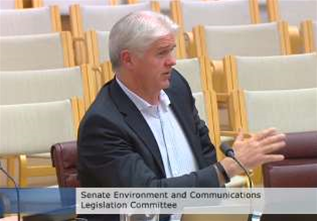NBN Co is now expecting to reach “hundreds of thousands” of premises less than forecast due to ongoing quality issues in the geospatial database it relies on for planning.

The network builder has called out problems with the national G-NAF database since 2012 and confirmed again early last year that the problems had persisted.
CEO Bill Morrow now says the number of premises in the rollout is “literally in the hundreds of thousands different – fewer - than what we thought we as a nation had”, and warned this will have some flow-on effects that will be laid out in the company’s forthcoming corporate plan update.
“We are working on the next version of the corporate plan which will update our rollout, peak funding, and financial data,” Morrow told senate estimates today.
“One thing that we are finding is that there are fewer premises in Australia than the databases have revealed in the past.
“We rely on this geospatial database to estimate the number of premises in an area but as we do our detailed designs we are seeing fewer homes than what was expected.
“This of course will have an impact on some of our forecasts and we will set this in our corporate plan later this year.”
Morrow said the most common cause was blocks that had been subdivided, converting the backyard into a battleaxe on which a new home is built.
In addition, some blocks identified as having premises on them in the G-NAF database simply had “no structure” built on them at all.
“We find a variety of different things that constitute a difference between the databases we rely on for how many homes are in a given area versus what we specifically find when we get into the field to roll this out,” Morrow said.
Morrow said the lower-than-forecast footprint would have some sort of impact on the cost per premises of access technologies used in affected areas.
“If there are fewer premises then that cost per premise goes up,” Morrow said.
However, Morrow said he was “not too worried” by the fluctuating data.
“We’ve known that the databases don’t match reality for a few years now and that’s why we’ve started giving ranges in the corporate plan for the percentage of the build because we just don’t have accurate data to determine how many homes will be done,” Morrow said.
“I think it’s important we understand we’re dealing with imperfect data as we try to do our forecasting and estimates.”


.png&h=140&w=231&c=1&s=0)







 iTnews Executive Retreat - Security Leaders Edition
iTnews Executive Retreat - Security Leaders Edition












_(1).jpg&h=140&w=231&c=1&s=0)



